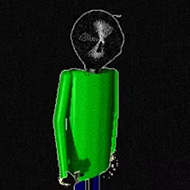
Among Us
Among Us has grown into one of the most intriguing multiplayer experiences by combining simple gameplay with complex social dynamics. This game places players aboard a spacecraft or similar setting where the crew must complete critical maintenance tasks, while hidden saboteurs—known as Impostors—work covertly to disrupt the mission and eliminate Crewmates. The tension between cooperation and deception creates a constantly shifting atmosphere where trust is fragile and every decision can mean survival or defeat. The gameplay revolves around communication, observation, and strategy, offering an endlessly replayable experience that appeals to both casual and competitive players.
Understanding the Core Roles and How They Shape Gameplay
Each round in Among Us assigns players randomly to one of two distinct roles: Crewmate or Impostor. The roles determine your objectives and how you approach the game environment, influencing the social interplay that is central to the experience.
- Crewmates: The bulk of the players are Crewmates tasked with completing a variety of maintenance jobs around the map. These tasks range from simple, repetitive mini-games like aligning engines or connecting wires to more complex activities that demand attention and timing. While focusing on these tasks, Crewmates must remain vigilant to identify suspicious behaviors and report any discovered bodies to trigger emergency meetings.
- Impostors: Impostors look and act like Crewmates but are secretly working against the team. Their primary goal is to eliminate Crewmates without raising suspicion. To do this, Impostors can sabotage critical systems such as oxygen supplies, electrical power, or communications, creating chaos and splitting up the group to create opportunities for stealth attacks. They can also use vents to quickly move across the map, evade detection, and stage strategic kills.
- Emergency Meetings and Reporting: When a dead body is found or a player calls for an emergency meeting, all players gather to discuss recent events, share observations, and decide who to eject from the ship. This phase is pivotal and often reveals alliances, exposes deceit, or results in mistaken accusations, adding a layer of psychological gameplay.
The dual nature of the roles ensures a dynamic balance of trust and mistrust, where every action can be scrutinized and every player could be an ally or a threat. The gameplay experience hinges on social deduction, sharp observation, and effective communication.
Map Design and Task Distribution: Navigating the Battlefield
Among Us features multiple maps, each with distinct layouts that impact strategies and player behavior. Understanding these maps is key for both Crewmates and Impostors to succeed.
- Task Placement: Tasks are scattered strategically to encourage exploration and force players to navigate various ship sections. Some tasks are visual, meaning they have animations that prove a player is genuinely completing them, helping to confirm innocence.
- Sabotage Opportunities: Impostors can disable lighting, reactor cores, or oxygen systems, causing critical emergencies that must be resolved swiftly. These forced interruptions add urgency and often divide the crew, providing chances for isolated kills.
- Use of Vents: Exclusive to Impostors, vents allow quick movement between locations, enabling surprise attacks or fast retreats. Mastery of vent routes can be decisive in evading suspicion.
- Security and Surveillance: Some maps include security cameras or admin rooms where players can monitor others’ movements. While useful, these require balancing attention with active participation in tasks and meetings.
Efficient navigation and task management are critical for Crewmates to stay ahead, while Impostors must manipulate the environment to their advantage without revealing their identity.
Social Dynamics: Communication and Deception
Among Us elevates social interaction to the core of gameplay. How players communicate during meetings can determine the course of a match. Persuasion, bluffing, and reading opponents’ reactions are essential skills.
- Discussion Phase: After a body report or emergency meeting, players debate who they believe the Impostor is. This is the only time for direct communication, and how well players present evidence or defend themselves can sway votes.
- Trust Building: Crewmates often try to stick together or complete visual tasks in groups to establish trust, but this can be manipulated by skilled Impostors.
- Deception Tactics: Impostors may accuse others to deflect suspicion, pretend to perform tasks, or create alibis by following other players closely.
- Psychological Play: Experienced players use tone, timing, and body language (in voice or text chat) to detect lies or pressure innocent players.
These interactions create a compelling narrative within every match, making social skills just as important as in-game actions.
Advanced Strategies for Crewmates and Impostors
Winning as a Crewmate or Impostor requires adapting strategies to the flow of the game and the behavior of other players.
- Crewmate Strategies:
- Stick with groups to reduce vulnerability but avoid clustering too tightly to minimize mass confusion.
- Complete visual tasks where possible to prove innocence.
- Use cameras and admin maps to gather intelligence without neglecting task completion.
- Communicate observations calmly and logically during meetings to build credibility.
- Be cautious of snap judgments or voting without evidence to avoid ejecting innocent players.
- Impostor Strategies:
- Use sabotage to control the pace of the game and split groups strategically.
- Fake task completion convincingly, focusing on task locations with no visual confirmation.
- Observe player routines to identify isolated targets.
- Coordinate with fellow Impostors if playing in teams to execute double kills or create distractions.
- Deflect suspicion skillfully during meetings, avoiding overly aggressive or defensive behavior that may raise alarms.
Customization, Updates, and Community Engagement
Among Us continually evolves through updates adding new maps, roles, and gameplay features, keeping the experience fresh. Players can customize avatars with outfits, hats, and pets, adding a personal touch to their identity onboard. The game thrives on community interaction, with players sharing stories, strategies, and memorable moments that highlight the unpredictable nature of every session.
Why Among Us Stands Out
The enduring appeal of Among Us lies in its elegant fusion of simple mechanics with complex human psychology. It is not just a game about completing tasks or eliminating players—it’s about reading others, making decisions under uncertainty, and embracing the chaos that social deception brings. This unique blend makes it accessible for new players yet challenging for veterans, ensuring that each match offers a new puzzle to solve and a new story to tell.
Whether cooperating to keep the ship running or scheming to take control, Among Us invites players into a dynamic world where trust is scarce and every action counts. Its mix of suspense, strategy, and social interaction continues to captivate a global audience, securing its place as a standout title in multiplayer gaming.
Comments
There are no reviews yet. Be the first one to write one.
































